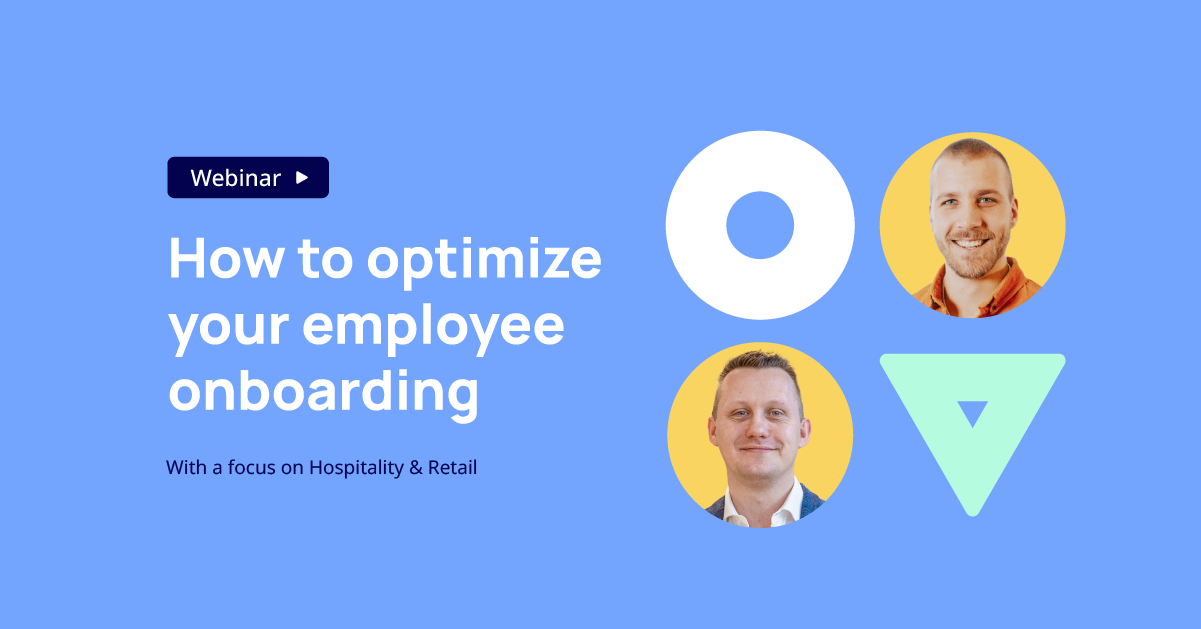Onboarding your frontline isn't just about issuing a uniform or handing over a tool kit. It's about igniting excitement and ensuring new hires feel welcomed and ready to contribute from day one. For your frontline workers, an effective onboarding program can create higher employee engagement and set the stage for long-term success and job satisfaction.
In this blog post, we'll go through the essential steps to effectively onboarding new employees, especially those who are out and about, on the floor, and on the go. Despite constituting 80% of the workforce globally, they can still be a bit tricky to reach with effective training and learning. But we got your back!
Here are the 4 practical steps we will go through to create a great onboarding experience⤵️
Step 1: Get practicalities in order and create a plan
Step 2: Implement a buddy program
Step 3: Organize social activities & events
Step 4: Prepare onboarding tasks & real-world cases
1: Practical Information and Onboarding Plan
Start by organizing all the practical details. Consider the role and what's needed for everyday work. Make sure you remember all the details needed, whether that is a uniform, name tag, locker, safety equipment, or access to scheduling systems.
It's a good idea to save these lists for your different roles or departments. Make sure it's all ready for your employees' first day. Check-in with departments like IT and the specific work unit to ensure everything is in place on all levels.
Knowing what is to come is often a source of security. That's why we recommend that you create an overview of the first few weeks and a plan for your new hires.
This plan should include shift schedules, introductory meetings, training sessions, and any necessary certifications. By clearly communicating what will happen and what is expected, new hires will feel more at ease and prepared to begin their roles.
Download our onboarding template as your guide – Ready to fill in and print for the first day. Just click on the image below⬇️
Another great thing to support your new hires in is to create a digital knowledge hub. Here you can include resources such as safety procedures, customer service standards, and company values that can be invaluable for new hires who may need to access information quickly during their shifts.
|
Pro tip! Do you already use Learningbanks' platform? Then, remember you can activate the AI Knowbot that allows your workers to get instant answers from any document you choose. Super great for your newbies! This means you can build your knowledge hub in your learning lifecycle platform😀 |
Examples of what to include in a knowledge hub:
- Step-by-step guides for tasks such as operating point-of-sale systems, handling customer complaints, or setting up equipment
- Lists of key contacts and team responsibilities
- Guidelines on safety, hygiene, and emergency procedures
- Company mission, vision, and customer service policies
2: Implement a Buddy Program
Pair new employees with both a professional and social buddy. In the hectic day-to-day work environment, a professional buddy from the same team can guide them through daily tasks, from navigating the store or perhaps, restaurant layout to managing daily responsibilities like restocking or handling returns.
A social buddy from another department can help the new hire feel more connected to the broader company culture. This could involve inviting them for breaks, introducing them to colleagues across different departments, or providing informal support in the early days.
3: Organize Social Activities and Events
Feeling connected to their teammates is just as important as understanding tasks. Organizing social events like team lunches, after-hours gatherings, or "welcome breakfasts" can help new hires feel like they are part of the team from the very beginning.
Examples of social events:
- Casual after-shift gatherings
- Monthly team lunches or breakfast meetings
- Group participation in company-sponsored events or community service initiatives
Get in-depth onboarding tips for the hospitality & retail sector in this webinar⬇️
4: Prepare Onboarding Tasks and Real-World Cases
Finding the right balance is key to a successful onboarding process. Overwhelming new hires with too much information or throwing them into complex tasks without guidance can lead to stress and confusion. Instead, assign onboarding tasks that gradually introduce them to their daily responsibilities.
How do you ease your new workers into the tasks? Well, for example, a retail worker might start with simpler tasks like inventory checks or shelf organization before moving on to customer interactions or operating the cash register.
In hospitality, a new team member might first shadow a colleague during a service shift before taking on responsibilities like managing guest check-ins.
Real-world cases, such as handling a difficult customer or addressing a safety issue, can also be presented as scenarios for discussion and role-playing during onboarding sessions. This approach allows new hires to apply what they've learned in a practical context, boosting their confidence and readiness.
| Pro tip! To create the best onboarding experience, make sure to collaborate with the new hire’s closest manager as they play a significant role in ensuring a smooth transition. |
What comes after the onboarding? Your workers need to keep developing and stay up to date. Get tips from other HR and L&D professionals on how to train your on-the-go workers the best in this article.
Want more onboarding tips? Have a look at our onboarding guide.


/Onboarding_PPT_hubdb-1.png?width=1000&height=559&name=Onboarding_PPT_hubdb-1.png)
